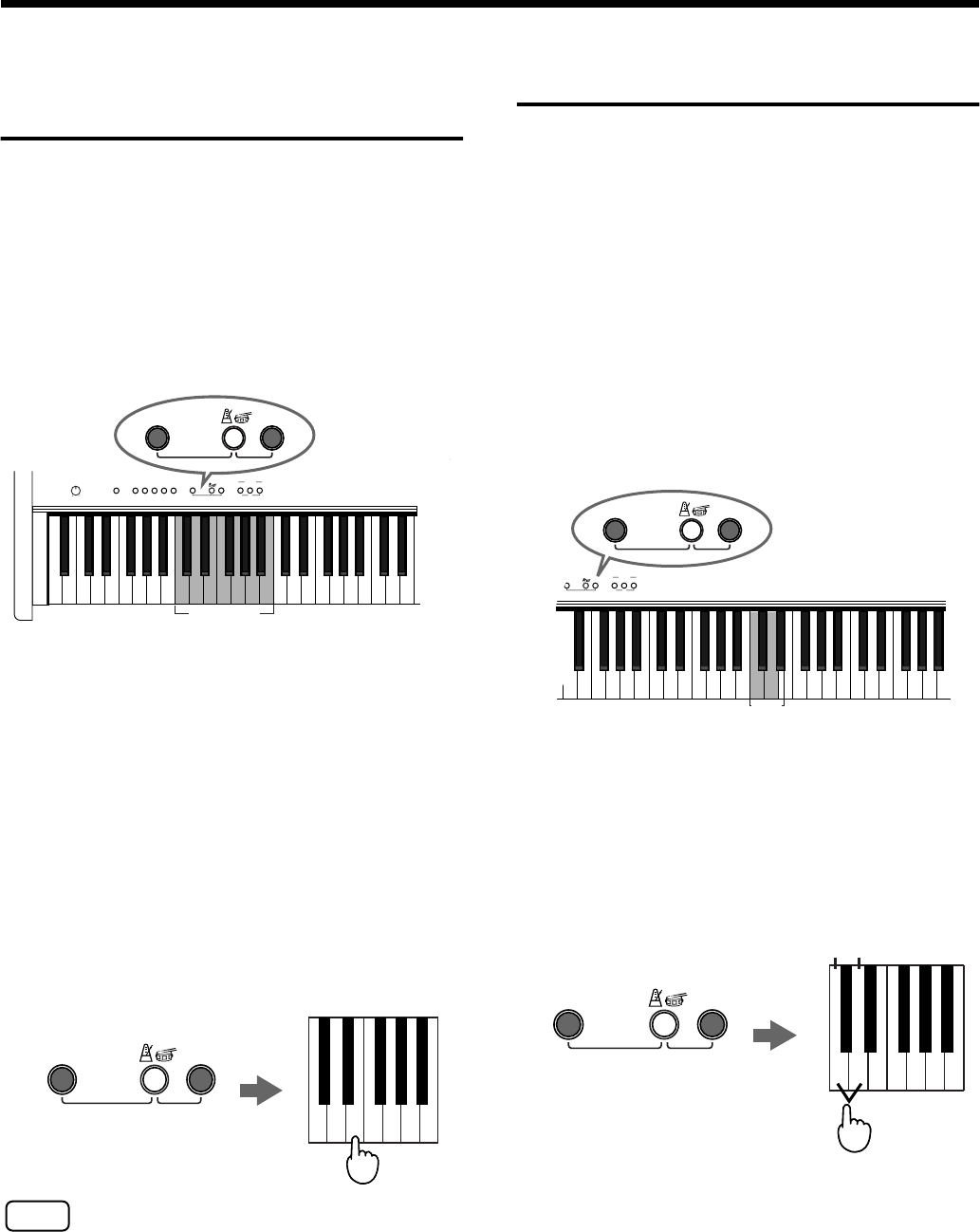
27
Some Handy Functions
Transposing without
Changing Your Keyboard
Fingering (Key Transpose)
You can transpose the key of a performance without having
to shift the position of your fingers on the keyboard.
This feature is called “Key Transpose.”
In situations such as when providing accompaniment to a
song, using the Key Transpose function to match the singer’s
vocal register lets you easily transpose the sounds without
changing the score.
These settings remains in effect until you turn off the power.
fig.03-03
1.
While holding down the [Variation] button and
[Song] button, press the tonic (root) of the key to
which you want to transpose.
Use the C2-B2 notes to select the tonic.
2.
To return to the normal pitch, while holding
down the [Variation] button and [Song] button,
press the C2 key.
<Ex.>
For example if you want the E pitch to sound when you play
the C key, you would hold down the [Variation] button and
[Song] button and press the E2 key.
fig.03-04
NOTE
The transposition setting is effective only on sounds
performed on the F-100’s keyboard. This setting is not
effective on tones from external MIDI messages played on
the F-100.
Adjusting the Pitch of the
Sound (Master Tuning)
In situations such as when playing ensemble with other
instruments, you can tune the F-100’s reference pitch to the
pitch of another instrument. The reference pitch generally
refers to the pitch of the note that’s played when you finger
the middle A key.
For a cleaner ensemble sound while performing with one or
more other instruments, ensure that each instrument’s
reference pitch is in tune with that of the other instruments.
This tuning of all the instruments to a reference pitch is
called “master tuning.” You can set the reference pitch
anywhere in a range of 415.3 Hz to 466.2 Hz.
When the instrument is turned on, the reference pitch is set
to “440.0 Hz.”
fig.7-06
■
Lowering/ raising the
Reference Pitch
1.
While holding down the [Variation] button and
[Song] button, press the “C4” note to lower the
reference pitch, or the “D4” note to raise it.
fig.7-07.e
Each time you press the “C4” key, the pitch will fall by
0.1 Hz. If you continue holding the key, the pitch will
continue falling.
Each time you press the “D4” key, the pitch will rise by
0.1 Hz. If you continue holding the key, the pitch will
continue rising.
MaxMin
Reverb
Volume
StringsOrganE.Piano
Harpsi-
chord
Piano
C2~B2
Song
Key Touch
Dual Balance
Variation
Song
Key Touch
Dual Balance
Variat ion Play
1
2
Rec
Recorder
Tra c k
Press
E2
C2 B2
While holding down two buttons...
Song
Key Touch
Dual Balance
Variation
C4~D#4
Song
Key Touch
Dual Balance
Variati on Play
1
2
Rec
Recorder
Tra ck
Song
Key Touch
Dual Balance
Variation
Raise
the pitch
Lower
the pitch
C4
Press
D4
While holding down two buttons...
Song
Key Touch
Dual Balance
Variation
F-100.e.book 27 ページ 2003年8月29日 金曜日 午前9時48分


















